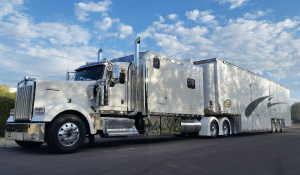Understanding The Factors Affecting The Cost Of Shipping A Non-Running Vehicle
When it comes to shipping a non-running vehicle, several key factors influence the overall cost of transportation. Firstly, the distance plays a significant role in determining the price. Generally, longer distances require more resources and time, resulting in higher shipping costs. Additionally, the weight and dimensions of the vehicle are crucial considerations. Heavier and larger vehicles may require specialized equipment or carriers, which can increase the cost.
The condition of the non-running vehicle also affects pricing. If it cannot be driven onto or off of a carrier, additional equipment such as winches or forklifts may be necessary, leading to higher expenses. Moreover, accessibility is another essential factor impacting shipping costs. If pick-up or delivery locations are in remote areas or have limited access for large transporters, extra fees may apply.
Lastly, timing can affect pricing as well. If there is an urgent need for expedited shipping services due to time constraints or specific deadlines, it can result in higher costs compared to regular delivery options.
It’s important to consider these factors when estimating the cost of shipping a non-running vehicle accurately. Consulting with professional shippers who specialize in transporting non-running vehicles can provide further insight into these variables and help ensure a smooth and cost-effective transportation process.
Evaluating The Condition And Size Of Your Non-Running Vehicle
Before shipping a non-running vehicle, it is essential to evaluate its condition and size to determine the cost and logistics involved in transportation. Firstly, assess the condition of your vehicle thoroughly. Is it partially functional or completely immobile? Are there any missing parts or mechanical issues? These details will help transportation companies determine how to handle your vehicle safely during transit.
Additionally, consider the size and weight of your non-running vehicle. Larger vehicles may require specialized carriers or equipment for transport, which can impact pricing. Measure the length, width, and height of your vehicle accurately to provide precise information to shipping companies.
Furthermore, take note of any modifications made to your non-running vehicle that may affect its size or weight. For instance, if you have added aftermarket accessories such as a roof rack or oversized tires, these should be included in the measurements provided.
By evaluating the condition and size of your non-running vehicle beforehand, you can ensure accurate quotes from shipping companies while also allowing them to make necessary arrangements for its safe transportation. Providing accurate information upfront will help streamline the shipping process and avoid any unforeseen complications during transit.
Comparing Different Shipping Options And Their Costs For Non-Running Vehicles
When it comes to shipping a non-running vehicle, there are several options available, each with its own set of costs and considerations. Two common methods include open transport and enclosed transport.
Open transport is the most cost-effective option for shipping non-running vehicles. In this method, your vehicle is loaded onto an open trailer along with other vehicles. While it offers a more affordable price point, it exposes your vehicle to the elements and potential road debris.
On the other hand, enclosed transport provides a higher level of protection for your non-running vehicle. It involves loading your vehicle onto a fully enclosed trailer, shielding it from any external factors such as weather conditions or debris. Due to this added protection, enclosed transport tends to be more expensive than open transport.
The cost of shipping a non-running vehicle can also depend on various factors such as distance traveled and the size of the vehicle. Longer distances will typically incur higher costs due to fuel expenses and driver wages. Additionally, larger vehicles may require specialized equipment or extra manpower during loading and unloading processes, resulting in increased prices.
To determine which option suits your needs best, consider factors like budget constraints, desired level of protection for your non-running vehicle, and specific requirements based on its size or condition.
Additional Fees And Services: What To Consider When Shipping A Non-Running Vehicle
When it comes to shipping a non-running vehicle, there are several additional fees and services that you should consider. Firstly, most auto transport companies charge an extra fee for transporting vehicles that are inoperable. This fee is typically higher due to the additional equipment and manpower required to load, secure, and unload a non-running vehicle.
Another aspect to consider is the need for special equipment or methods to transport your non-running vehicle. Depending on the condition of the vehicle, it may require a winch or a forklift for loading and unloading. These specialized services might incur extra charges.
Additionally, some auto transport companies offer storage facilities where your non-running vehicle can be kept before or after transportation. If you require temporary storage, be sure to inquire about the associated costs.
It’s also important to factor in any potential repairs or modifications needed for safe shipping. For instance, if your non-running vehicle has flat tires or mechanical issues that prevent it from being easily loaded onto a trailer, you may need to arrange for tire replacements or mechanical repairs prior to shipping.
Considering these additional fees and services will help you better estimate the total cost of shipping your non-running vehicle while ensuring that all necessary arrangements are made beforehand.
Tips For Saving Money On Shipping A Non-Running Vehicle
Shipping a non-running vehicle can be a bit more challenging and costly compared to shipping a running one. However, with some careful planning and consideration, you can still find ways to save money on this process. Here are some useful tips to help you minimize costs when shipping your non-running vehicle:
1. Choose the right shipping method: Opting for open transport instead of enclosed transport can significantly reduce your shipping expenses. Although open carriers don’t provide as much protection, they are usually more affordable. 2. Compare multiple quotes: Obtain quotes from different auto transport companies and compare them thoroughly. Look for competitive pricing while ensuring that the company has a good reputation and proper insurance coverage.
3. Plan well in advance: Booking your shipment well ahead of time allows you to take advantage of early-bird discounts or seasonal promotions offered by transportation companies. 4. Prepare your vehicle properly: Remove any personal belongings from the car before shipping it, as extra weight may incur additional charges. Additionally, ensure that the tires are inflated, the battery is charged, and there is enough fuel for loading/unloading purposes.













